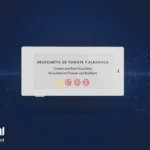The ROI of digital buffet tags has become a strong argument for many hotels seeking efficiency and profitability. What once seemed like a distant innovation is now a practical solution that saves costs, streamlines operations, and enhances the guest experience.
Why talk about ROI in a hotel buffet?
The buffet is one of the most valued services by guests, but also one of the most demanding in operational terms. Every day, small tasks are repeated that, when added up, represent a significant cost:
- Printed materials: paper, ink, lamination, and holders.
- Staff time: hours spent printing, cutting, and replacing signage.
- Errors and confusion: outdated information that may cause complaints or even legal issues with allergens.
When we add all this up, we see that the return on investing in digitalization is not only possible but necessary.
The hidden costs of manual buffet signage
A 200-room hotel typically requires around 120 labels to cover all dishes in its buffet. Before digitalization, this meant printing, laminating, placing, and removing those labels up to 3 times a day (breakfast, lunch, and dinner). In total, that’s more than 10,000 labels handled per month.
Beyond the cost of materials (paper, ink, lamination, holders), this process demanded between 30 and 45 minutes of staff time per service. Over a month, that translates to more than 45 hours dedicated exclusively to signage. In a sector where every minute and every euro counts, this constant effort becomes a hidden cost that erodes profitability.
How digital buffet tags change the game
Digitalization completely transforms buffet management. With solutions like Buffetsmart, changes are made from a central panel in seconds, with no need for printing or laminating. Key benefits include:
- Time savings: the F&B team recovers 30–45 minutes per day.
- Cost reduction: no more printing, laminating, or reprocessing.
- Greater agility: special menus, last-minute changes, and allergen updates are managed instantly.
- Real sustainability: less paper and plastic, aligned with hotel chains’ environmental commitments.
The ROI of digital buffet tags: data that matters
The return on investment is clear. A mid-sized hotel can save between €3,000 and €5,000 per year just on materials and staff time. In most cases, the initial investment pays off in less than one year. On top of that, indirect benefits include:
- Happier guests: better online reviews and loyalty.
- Fewer incidents: accurate information reduces risks and complaints.
- Innovative image: the hotel is perceived as modern and sustainable.
Beyond the numbers: trust and experience
The ROI of digital buffet tags is not measured only in euros. Intangible benefits carry great weight in a hotel’s strategy:
- Guest confidence, knowing exactly what they are eating at all times.
- A motivated team, freed from repetitive tasks and focused on guest service.
- A stronger brand, aligned with innovation and sustainability.
Conclusion: an investment that pays for itself
Digitalizing the buffet is not a luxury—it is a strategic decision. The ROI of digital buffet tags proves that this is about real savings, operational efficiency, and an improved guest experience. It is an investment that pays for itself and makes the difference in such a competitive sector as hospitality.
Sources and references
- Hosteltur and Instituto Tecnológico Hotelero (ITH).
- FAO – Food Waste Reports.
- Sincroni’s own estimates based on clients in Spain and Latin America.










